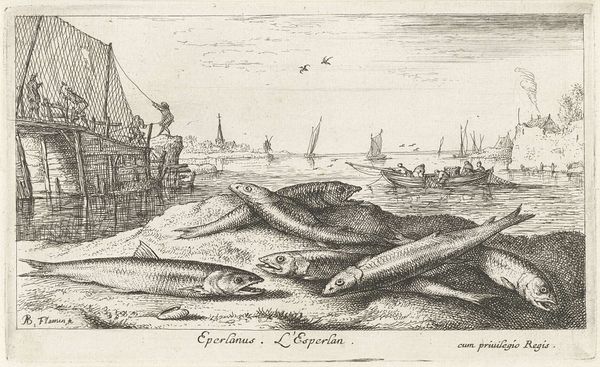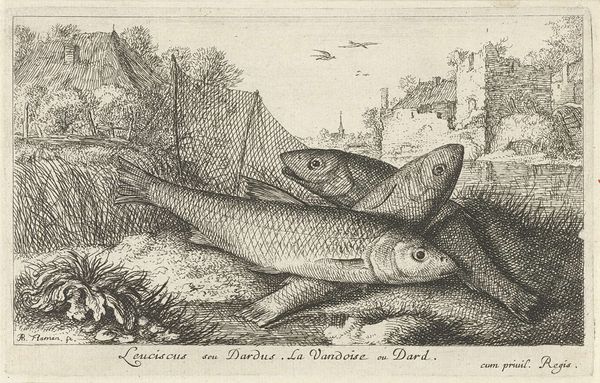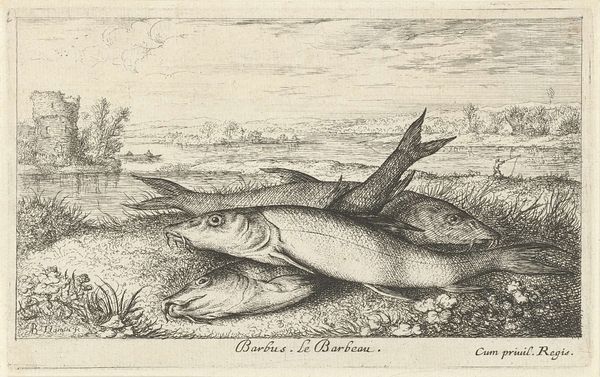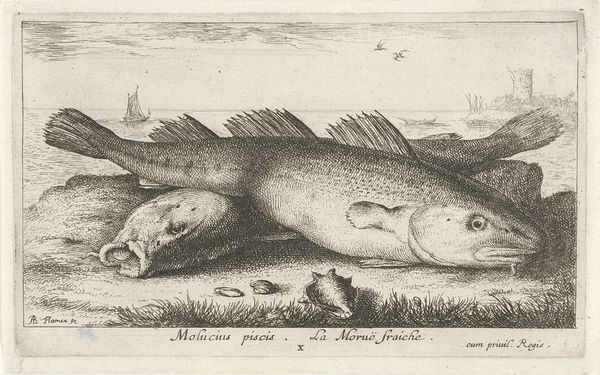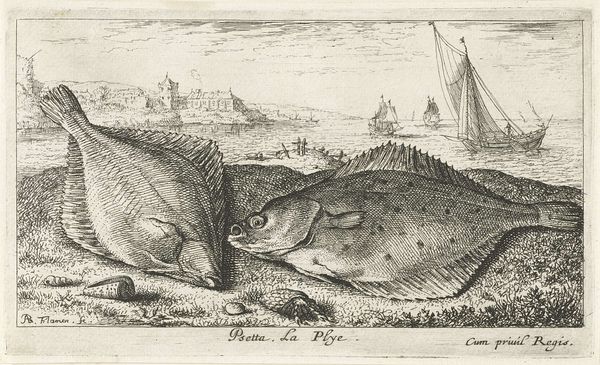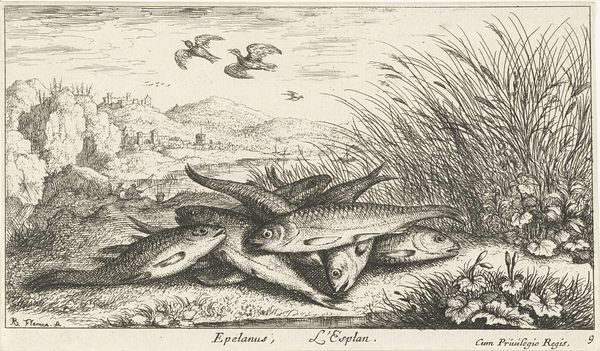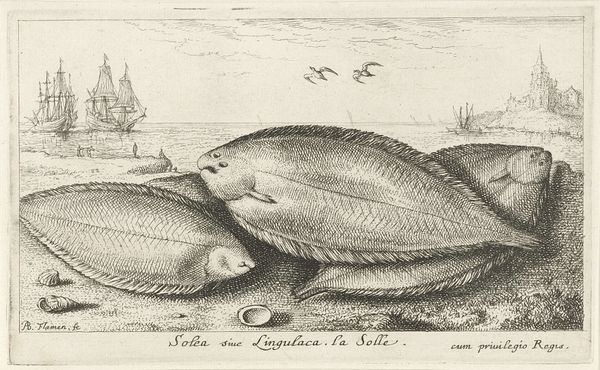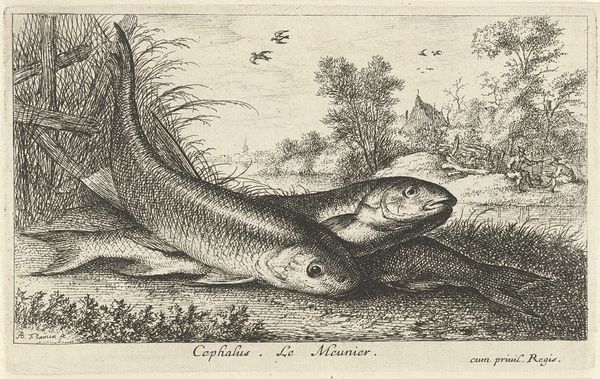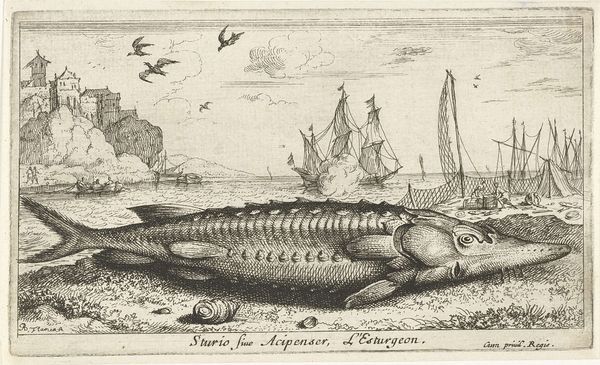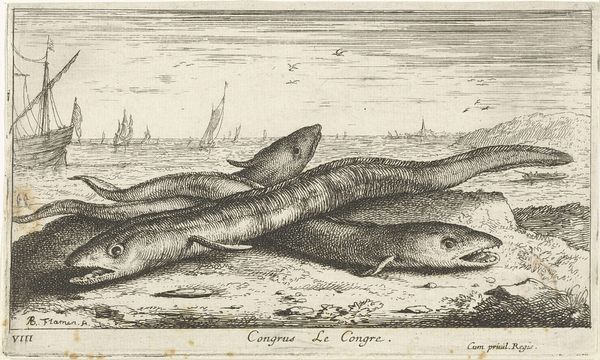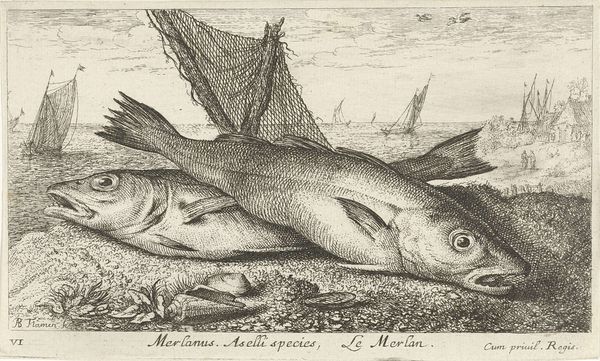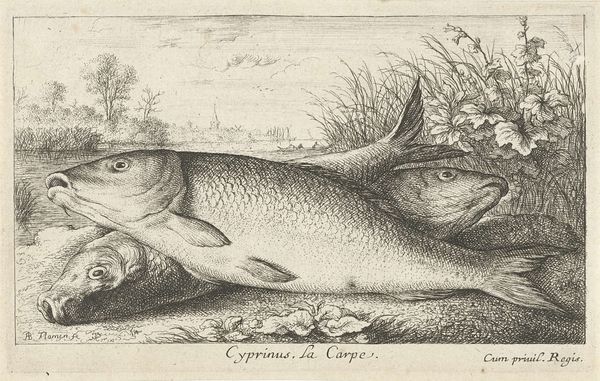
print, engraving
#
dutch-golden-age
# print
#
old engraving style
#
landscape
#
genre-painting
#
engraving
Dimensions: height 102 mm, width 182 mm
Copyright: Rijks Museum: Open Domain
Curator: This engraving, titled "Vier blankvoornen bij een visnet," or "Four Roach by a Fishing Net," dates back to 1664 and is the work of Albert Flamen. Its immediately striking use of monochrome detail brings clarity to the stillness. Editor: They certainly seem freshly caught. I’m drawn to the detail in the scales and fins—you can almost feel their texture despite the image being a print. The stark contrast makes the fish feel almost hyperreal, a careful record of nature's bounty. What was Flamen’s wider artistic output like? Curator: Flamen specialized in prints depicting animals, landscapes, and genre scenes, all of which suggest a close engagement with the Dutch countryside. Considering the thriving fishing industry in the Netherlands at this time, and its integral contribution to Dutch prosperity, these fish aren't just specimens but representations of resources harvested and livelihoods sustained. The detailed depiction of fishing nets and flora supports that wider understanding of regional practice. Editor: I see that, and the detailed naturalism you mention makes it very characteristic of its era. Note how he uses line work and hatching to suggest the dimensionality of each fish. And yet, by cropping the composition so tightly on the fish, Flamen prompts us to scrutinize surface details – the reflective eyes, for example, draw my gaze in immediately. It almost transcends its socio-economic setting. Curator: But the positioning, that interplay of foregrounded fish against the panoramic background. Surely that implies the social landscape alongside? What does it tell us about Dutch life, the access to food? These aren't rare delicacies, but readily available nourishment. Editor: True, true. Seeing those little windmills reminds me that nothing exists in a vacuum; landscape does contribute, creating a cohesive visual experience for the viewer beyond simple surface analysis. Even though it's the landscape in the background rather than, say, one specific to the fishermen, I take your point. Curator: Ultimately, this piece reflects how Flamen viewed the Dutch Golden Age’s intricate web of economic resources and natural reality through his engraver’s tools. It offers more than aesthetic merit, it offers perspective. Editor: I can't disagree, and thanks for that.
Comments
No comments
Be the first to comment and join the conversation on the ultimate creative platform.
